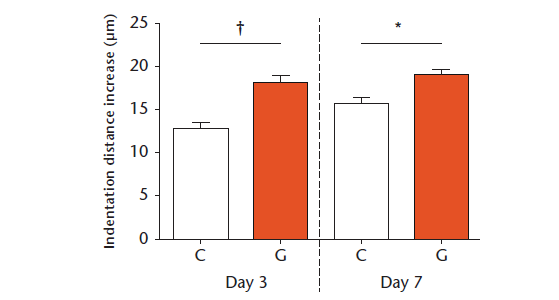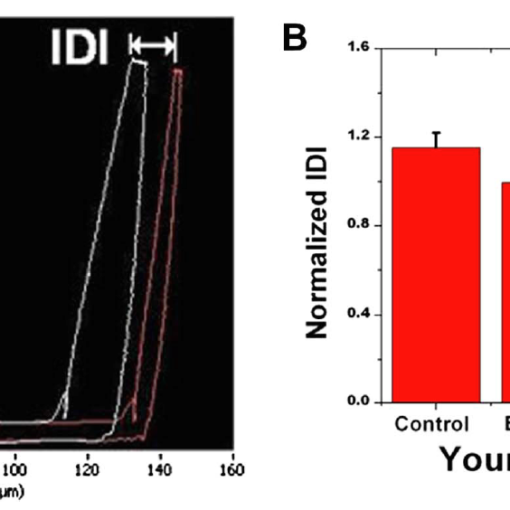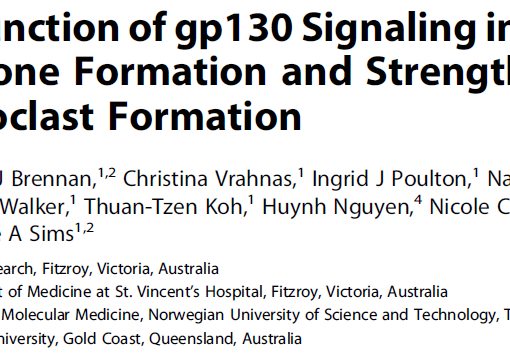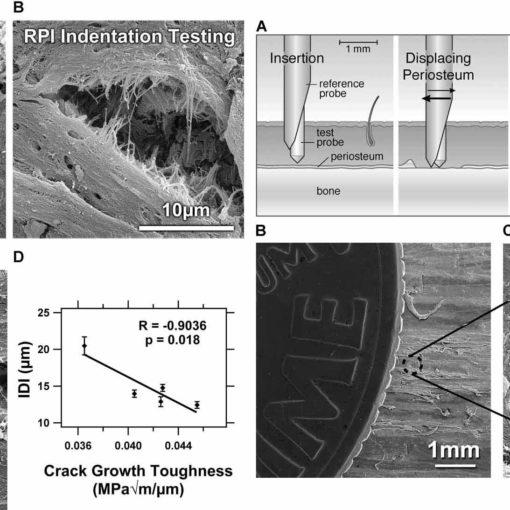Abstract
OBJECTIVES:
Advanced glycation end-products (AGEs) are a post-translational modification of collagen that form spontaneously in the skeletal matrix due to the presence of reducing sugars, such as glucose. The accumulation of AGEs leads to collagen cross-linking, which adversely affects bone quality and has been shown to play a major role in fracture risk. Thus, intervening in the formation and accumulation of AGEs may be a viable means of protecting bone quality.
METHODS:
An in vitro model was used to examine the efficacy of two AGE-inhibitors, aminoguanidine (AG) and pyridoxamine (PM), on ageing human cortical bone. Mid-diaphyseal tibial cortical bone segments were obtained from female cadavers (n = 20, age range: 57 years to 97 years) and randomly subjected to one of four treatments: control; glucose only; glucose and AG; or glucose and PM. Following treatment, each specimen underwent mechanical testing under physiological conditions via reference point indentation, and AGEs were quantified by fluorescence.
RESULTS:
Treatment with AG and PM showed a significant decrease in AGE content versus control groups, as well as a significant decrease in the change in indentation distance, a reliable parameter for analyzing bone strength, via two-way analysis of variance (ANOVA) (p < 0.05).
CONCLUSIONS:
The data suggest that AG and PM prevent AGE formation and subsequent biomechanical degradation in vitro. Modulation of AGEs may help to identify novel therapeutic targets to mitigate bone quality deterioration, especially deterioration due to ageing and in AGE-susceptible populations (e.g. diabetics).Cite this article: Bone Joint Res 2018;7:105-110.
https://www.ncbi.nlm.nih.gov/pubmed/29363521





